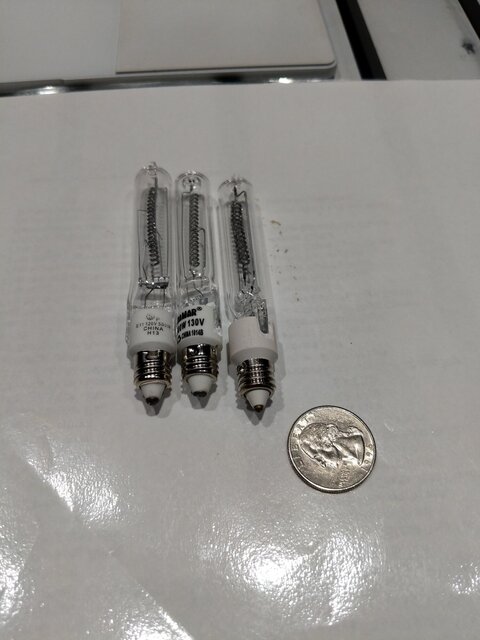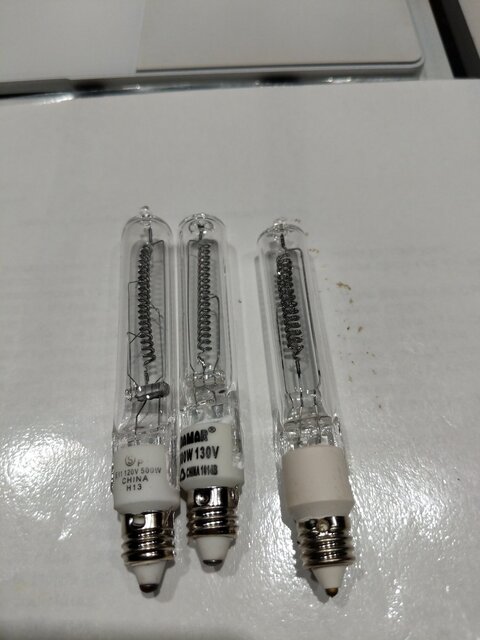clopedia89
Member
I volunteer in a high school theater, and we're having an issue with the bulb life of our house lights. A portion of our house lights are made up of 500W halogen lamps, of which 5 are extremely difficult to get to for lamp changes. Around 15-20 years ago, the maintenance guy at the time (since retired) got tired of dealing with them and managed to find some lamps that were "guaranteed to last decades." He managed to convince the school to pay the higher price for these lamps, and they have indeed lasted a ridiculously long time. All 5 lasted at least 15 years of daily use (some are getting close to 20 years now), but have sadly begun to die. We have been changing them out with the same lamp we use for the other, more accessible, fixtures of the same type, but the life span, while fairly typical for this lamp, is short enough to be causing some major headaches for our maintenance team. Our question is simple: Can anyone look at these pictures and identify the old bulb that lasted 15+ years and tell us where to get more?
The lamps in the pictures are arranged as follows, left to right:
- 120v lamps we are currently using
- 500QCLMC 130v lamps we are switching to in an attempt to extend bulb life
- old, unknown lamp with 15+ year lifespan
(Also, our supply voltage never exceeds 118v as measured by our dimmer rack, and almost always sits around 113v-117v, so i doubt rated voltage is an issue.)
The lamps in the pictures are arranged as follows, left to right:
- 120v lamps we are currently using
- 500QCLMC 130v lamps we are switching to in an attempt to extend bulb life
- old, unknown lamp with 15+ year lifespan
(Also, our supply voltage never exceeds 118v as measured by our dimmer rack, and almost always sits around 113v-117v, so i doubt rated voltage is an issue.)




